Chapter 6. Reducing the burden and impact of the chronic noncommunicable diseases and their risk factors
 Noncommunicable diseases are the leading causes of
illness, disability, and death in the Americas. They account
for 79% of all deaths in the Region, and 35% of those deaths
are premature, that is, they occur in persons aged 30 to 69
years. PASB’s technical cooperation facilitated advocacy by
countries of the Caribbean, which had long recognized the
need to address these disorders. This work helped bring
NCDs to global attention and contribute significantly to
events that led to the 2011 UN High-level Meeting on the
Prevention and Control of Non-communicable Diseases and
the Meeting’s resulting Political Declaration.
Noncommunicable diseases are the leading causes of
illness, disability, and death in the Americas. They account
for 79% of all deaths in the Region, and 35% of those deaths
are premature, that is, they occur in persons aged 30 to 69
years. PASB’s technical cooperation facilitated advocacy by
countries of the Caribbean, which had long recognized the
need to address these disorders. This work helped bring
NCDs to global attention and contribute significantly to
events that led to the 2011 UN High-level Meeting on the
Prevention and Control of Non-communicable Diseases and
the Meeting’s resulting Political Declaration.
In 2012, the 28th Pan American Sanitary Conference
approved the regional Strategy for the Prevention and
Control of Noncommunicable Diseases (CSP28/9, Rev. 1),
which was aligned with the WHO Global Strategy for the
Prevention and Control of Noncommunicable Diseases.
Following the adoption in 2013 of the WHO Global Action
Plan for the Prevention and Control of Noncommunicable
Diseases 2013-2020, PAHO launched its regional Plan of
Action for the Prevention and Control of Noncommunicable
Diseases (CD52/7, Rev. 1), which is adapted to the Region’s
needs and guides the Organization’s technical cooperation
in this area.
Like the global frameworks, PAHO’s regional strategy and
plan of action emphasize the four highest-burden NCDs
in the Americas—cardiovascular diseases (CVDs), cancer,
diabetes, and chronic respiratory diseases—and their four
main risk factors: tobacco use, unhealthy diet, physical
inactivity, and harmful use of alcohol. The frameworks seek
to raise the profile of NCDs in countries’ development and
economic agendas and to promote whole-of government, health-in-all-policies, whole-of-society approaches, with a
multisectoral response to NCDs that involves government,
civil society, and the private sector.
Combating NCDs and their risk factors
Policies, plans, and programs
During the reporting period, PASB’s technical cooperation
contributed to:
• Development or revision of national multisectoral NCD
policies, strategies, or plans in Antigua and Barbuda,
Belize, Costa Rica, Dominica, Ecuador, Guyana,
Nicaragua, Panama, Paraguay, Saint Kitts and Nevis,
and Suriname.
• Integration of new or enhanced programs for
NCD care into national health services. Dominica,
Saint Lucia, Saint Vincent and the Grenadines,
and Suriname launched programs for integrated
management of chronic diseases focused on primary
care, while Colombia, Ecuador, Jamaica, Mexico, and
Peru developed new programs specifically for the
prevention and control of cancer.
• Improvement in self-management of chronic diseases,
through implementation of the Chronic Care Passport,
a patient-held booklet that fosters adherence to
medication, encourages self-care and prevention, and
facilitates NCD data collection; capacity-building in
diabetes self-management through an online course
offered by the PAHO VCPH; and implementation of the
Chronic Disease Self-Management Program (CDSMP).
The CDSMP consists of peer-led, community-based workshops that empower older adults to manage
their chronic conditions in coordination with health
care teams, and to remain active members of society.
Evidence indicates that participants improve their
health status, health behavior, and self-care, and make
fewer emergency room visits. The model was adapted
by CARICOM to better address the needs of Caribbean
countries, and implementation of that chronic care
model is included in the NCD strategies or action
plans of several CARICOM countries.
The CDSMP has been
rolled out in all Eastern
Caribbean countries and
has been well integrated
into health services at all
levels. The experience has
been documented and
presented to Brazil, Chile,
Peru, and the United States
to promote cooperation
among countries.
PAHO launched the SaltSmart Consortium and the
Women’s Cancer Initiative within the framework of the Pan
American Forum for Action on NCDs (PAFNCD):
35
• The SaltSmart Consortium brings together government
health and nutrition experts, civil society (including
universities), and industry representatives. The
Consortium endorsed a multiyear plan to cut dietary
salt consumption in the Americas in half by the year 2020. It includes campaigns to raise public awareness
of the importance of salt reduction and steps to
reduce salt in industrially processed foods. In 2014,
the Consortium produced a series of principles and
specific targets to guide efforts in the Region to
reduce the amount of salt in a variety of foods. Antigua
and Barbuda, Barbados, and Saint Vincent and the
Grenadines have been implementing a salt reduction
project that uses a social marketing approach to target
young mothers with school-age children. In 2017,
technical teams from Brazil, Costa Rica, Paraguay, and
Peru were trained to use social marketing strategies to
reduce discretionary salt intake.
• The Women’s Cancer Initiative is the result of a
partnership between PAHO and leading global and
regional cancer prevention organizations. The Initiative
is committed to reducing breast and cervical cancers,
the leading cancers among women in Latin America
and the Caribbean. The three-year Initiative began in
2013, and activities were implemented at the regional
level and in countries that included Argentina, Bolivia,
Chile, Costa Rica, Ecuador, El Salvador, Guatemala,
Peru, Saint Kitts and Nevis, and Saint Vincent and
the Grenadines. The Initiative addresses advocacy
and communication; capacity-building for detection,
diagnosis, treatment, and care; improved access to
services and treatment; wider vaccination against HPV;
and expanded research. PASB has prepared an analysis
and report on progress in cervical cancer prevention
and control to be discussed during the 29th Pan
American Sanitary Conference in September 2017.
Legislation and regulation
Legislative and regulatory initiatives have major roles to play
in NCD prevention and control, particularly in addressing
NCD risk factors. Reducing exposure to tobacco, unhealthy
foods, and alcohol, and enabling physical activity by “making
the healthy choice the easy choice” have been shown to be very cost-effective in reducing NCDs. Fiscal policies, such as
increasing excise taxes on harmful products, can discourage
the consumption of these products and decrease health
costs, while generating new revenues that can be used for
health interventions.
Over the period under
review, PAHO’s technical
cooperation contributed to
the development of several legislative and regulatory
initiatives in the countries of
the Region.
PAHO implemented its REGULA Initiative, which is aimed
at enhancing countries’ abilities to develop and implement
legislative, regulatory, and fiscal measures for NCD risk
factor reduction. The Initiative builds on ongoing technical
cooperation for implementation of effective measures
aimed at curbing tobacco use and the harmful use of
alcohol, and promotion of healthy eating and physical activity. These measures include introducing or increasing
taxes on tobacco, alcohol, and sugar-sweetened beverages
(SSBs); price incentives for healthy food products;
effective nutrition labeling; health warnings for tobacco
and food products; and restrictions on marketing of
harmful products, including a complete ban in the case of
tobacco. As part of its work under this Initiative, the Bureau
developed a technical reference document and convened
a group of experts from Brazil, Canada, Chile, Colombia,
Mexico, Peru, and the United States to review the document
and propose lines of action for technical cooperation in
this area. The group identified four key lines of action for
the Bureau: 1) ongoing surveillance of NCD risk factors
and evaluation of regulatory processes; 2) development
of organizational structures, financing, and processes for
regulatory entities; 3) development of technical expertise
on controlling NCD risks; and 4) promotion of research on
the effectiveness of, and best practices in, regulatory action
to reduce NCD risks. Through a grant from the OPEC Fund
for International Development, the Initiative is currently
focusing on activities in Bolivia, Guatemala, and Honduras,
three of PAHO’s Key Countries.
Innovations in technology for cervical cancer screening
Cervical cancer is highly preventable, and PASB has been advancing the application of a new technology, HPV
testing, to improve the effectiveness of screening programs, as well as HPV vaccines to prevent cervical cancer.
In 2013, PAHO and WHO issued new evidence-based guidelines on cervical cancer screening, which included
the use of HPV testing as a primary screening tool. The Bureau organized multistakeholder policy dialogues
in Costa Rica, Ecuador, El Salvador, Guatemala, and Nicaragua to disseminate the new evidence and discuss
policy changes. This led to the development and rollout, with PASB support, of new national policies and plans
supporting screening programs based on HPV testing.
The Bureau also led demonstration projects on HPV testing in Chile, Saint Kitts and Nevis, and Saint Vincent and
the Grenadines, and has prepared a program guide on planning, implementation, and evaluation of screening
programs that incorporate HPV testing, building on experiences in low- and middle-income settings.
PASB facilitated a series of events to exchange scientific information and share country experiences, including
a regional meeting with stakeholders from 20 countries and six international organizations, and a public-private
sector dialogue with HPV test manufacturers on how to make the tests more affordable and accessible.
As a result of that dialogue, the Bureau established criteria and standards for selecting HPV tests and has
collaborated with the WHO Prequalification of Medicines Program for these tests to be included in the PAHO
Strategic Fund, in order to allow Member States to purchase them at affordable prices.
Tobacco control
Several countries continued on the path to implementation
of the WHO Framework Convention on Tobacco Control
(FCTC):
• In 2013, Suriname enacted strong tobacco control
legislation, banning the smoking of tobacco products
in all indoor public places and workplaces, providing
rules on the packaging and labeling of cigarettes, and
banning all forms of tobacco advertising, promotion,
and sponsorship.
• In 2016, Colombia enacted Law 1819/Tax Reform,
which modified Law 223 of 1995, increasing tobacco
taxes from the previous level of 659 pesos per 20-unit
pack to 1,400 pesos per 20-unit pack in 2017 and to
2,100 pesos per 20-unit pack in 2018. The law also
introduced a progressive increase in the specific
component of tobacco taxes, which, from 2019, will be
adjusted to the consumer price index plus four points.
• In 2016, Peru’s Ministry of Economy and Finance
approved, by Presidential Decree No 112-2016-EF, a 157% increase in the excise tax on tobacco products,
from 0.07 to 0.18 Peruvian soles per cigarette.
• In January 2017, Barbados passed legislation to ensure
that e-cigarettes are subject to the same controls and
health warnings on packaging as regular cigarettes.
• In June 2017, Guyana had the first reading in the
National Assembly of the Tobacco Control Bill 2017,
aimed at preventing public exposure to secondhand
smoke and banning advertising of tobacco products,
including e-cigarettes.
In 2013 and 2014, respectively, Nicaragua and Uruguay
became the world’s first two countries to ratify the
new WHO Protocol to Eliminate Illicit Trade in Tobacco
Products. In 2015, Ecuador became the third country,
followed by Panama in 2016 and Costa Rica in 2017.
The Protocol, which is supplementary to the FCTC but
also a new treaty in itself, sets out measures to fight the
illegal tobacco trade. These include licensing, tracking,
and tracing tobacco products, as well as monitoring and
regulating tobacco sales. The Protocol also promotes
international cooperation, including extradition of
suspected participants in the illicit tobacco trade. The
Internal Revenue Service of Ecuador developed a tracking
and tracing system for tobacco products (and alcoholic
beverages, including beer), which has been operational
since March 2017. Ecuador has collaborated with other
countries interested in implementing similar systems
as part of South-South cooperation, through the Latin
American Intersectoral Network on Fiscal Policies for
Tobacco Control.
The Bureau organized subregional workshops on tobacco
and trade, where officials from ministries of health and
finance worked together to develop fiscal scenarios for
amending their tobacco tax structures to meet both health
and revenue targets.
The workshops in Central
and South America led
to the development of
proposals for tobacco tax increases in Colombia and
Peru and to the creation of
subregional networks to
discuss tax harmonization
and strategies to eliminate
illicit trade in tobacco
products.
In 2017, Colombia and El Salvador were the only two
countries from the Region of the Americas selected to
participate in the FCTC Project 2030, among 15 countries
selected globally. The FCTC Secretariat developed the
project to support Parties to the WHO FCTC that are eligible
to receive official development assistance. The project,
which runs from April 2017 to March 2021, will contribute
to achievement of the SDGs by advancing implementation
of the FCTC and supporting its incorporation into national
health and development agendas.
Healthy nutrition, physical activity, and prevention of
overweight and obesity
Thirteen countries
36 passed laws and/or implemented
national policies or regulations to promote healthy
nutrition and physical activity in accordance with PAHO/
WHO guidelines. The measures include taxes on SSBs;
restrictions on the marketing of unhealthy food and
beverages to children; provision of healthy school meals;
and requirements for labeling industrially processed foods,
in order to confront the growing problem of overweight
and obesity in both children and adults. Paraguay approved
new regulations to reduce the salt content of industrially
produced bread, and Argentina passed a sodium reduction
law (Act 26905), which entered into force in December
2014.
Harmful use of alcohol
PASB brought together experts on alcohol marketing and
regulation from countries in the Americas and Europe, and
from Australia, India, and South Africa, to review evidence
on the effects of alcohol marketing, particularly on young
people, and on the effectiveness of voluntary, as opposed
to statutory, regulation. The experts concluded that alcohol
advertising and promotion should be regulated, monitored,
and evaluated by governments independently of the
alcohol industry and that comprehensive bans on alcohol
marketing are most effective. They called on the Bureau
to provide guidance to Member States in developing and
enacting legislation in this regard. In 2017, PASB published
a technical note detailing the evidence for alcohol
marketing regulation and key elements for developing and
implementing effective legislation, including the use of
human rights principles and standards to protect children
and other vulnerable groups.
The Bureau undertook technical cooperation with Chile,
Colombia, Costa Rica, Ecuador, Grenada, Jamaica,
Paraguay, Peru, Saint Kitts and Nevis, and Suriname in the
development or strengthening of national alcohol policies
and plans, promoting population-based measures as the
core of national alcohol-related activities. The national
interventions were complemented by a subregional
workshop on alcohol policy development and health-related
law held in Belize for Central American countries. Another
measure was the inclusion of the topic of prevention of
harmful use of alcohol in REGULA subregional workshops
on fiscal policies and the investment case for NCD
prevention and control.
Countering industry resistance
Following the introduction of legislation and regulations,
there has been resistance and “pushback” from the
producers and purveyors of the products deemed harmful
to health. These efforts have ranged from attempts to influence the public and government officials to legal action
to block implementation of the measures. In response to
requests from Member States, the Bureau provided support
not only in the technical aspects of effective legislation
and regulations, but also in countering industry tactics. The
support included:
• Chile: Collaboration between PAHO/WHO and FAO
country offices to counter industry attempts to block
implementation of new regulations requiring front-of-package warning labels on processed foods high in
sugar, salt, or saturated fat, and provision of arguments
to counter questions from the alcohol industry on
PAHO/WHO data on alcohol consumption and harms.
• Costa Rica: Provision of arguments to the Minister of
Health on perceived conflicts of interest related to the
participation of alcohol industry representatives on
a commission tasked with reviewing and approving
alcohol advertising. The proposed industry participation
was deemed unconstitutional and was blocked.
• Ecuador: Submission of an amicus brief
37 defending
regulations requiring front-of-package nutrition labeling
for processed foods.
• Jamaica: Assistance to the Ministry of Health in
defending new tobacco control measures against
industry opposition, including through advocacy at
the prime ministerial level, and commission of a study
on the effect of the alcohol trade on tourism and
the perceived impact of alcohol taxation. The study
demonstrated that tourism is not perceived as a barrier
to alcohol taxation.
• Peru: Provision to the Congress’ health committee
and the Minister of Health of written support from the
Director of PAHO for legislation on healthy food for
children and adolescents, and provision of evidence by
the Bureau’s technical experts to inform discussions
about new regulations to implement the law. PAHO
also supported the provision of expert evidence to
counteract alcohol industry arguments concerning
proposed legislation on alcohol-related fiscal measures.
• Uruguay: Submission of an amicus brief defending
tobacco control legislation that was challenged by
Philip Morris International at the World Bank Group’s
International Centre for Settlement of Investment
Disputes. In a historic milestone, Uruguay won the
lawsuit in July 2016.
Taxes on sugar-sweetened beverages
Mexico has the world’s highest per capita soda consumption and one of the highest rates of death from diabetes.
In response, the country approved a new law in 2013 establishing taxes on SSBs, as a public health measure to
reduce demand. The law mandates a tax of 1 peso per liter on sugary beverages, in both liquid and powdered form,
and an 8% tax on energy-dense hyperprocessed foods (“junk food”). It also includes new restrictions on advertising
unhealthy food products to children, as well as new requirements for food labeling.
This groundbreaking achievement in Mexico was the result of joint efforts by the Ministry of Finance, the Ministry of
Health, the federal Congress, academia, civil society, and international organizations. PASB supported advocacy for
the legislation by organizing three special forums with the participation of international experts and policymakers:
an “economic forum,” a “legislation forum,” and a “media forum.” In addition, the Bureau compiled scientific evidence,
developed fact sheets on the use of fiscal policies to modify consumption patterns in favor of healthier choices, and
facilitated dialogue between the Government and civil society. The revenues generated by the new taxes will be used
to provide safe drinking water in schools throughout Mexico.
In 2014, PASB published a report, Taxes on Sugar-sweetened Beverages as a Public Health Strategy: The Experience
of Mexico, which documents Mexico’s efforts and describes how supporters of the tax initiative were able to
overcome the active opposition of the soft drink industry and its allies. The report cites preliminary results of a study
conducted jointly by Mexico’s National Institute of Public Health (INSP) and the University of North Carolina at Chapel
Hill (United States), which found an average 6% reduction in sales of the taxed beverages during the tax’s first year, as
compared with the previous year. Further assessment found a 10% decline in the second year, for an average of 8%
over the two-year period.
Mexico’s experience has informed similar efforts in Barbados, Chile, Dominica, and Ecuador, which all implemented
SSB taxes between 2014 and 2016. As of mid-2017, Jamaica banned the provision of SSBs with governmentprovided
school lunches, and Trinidad and Tobago banned the provision or sale of SSBs in and around government
or government-supported schools, and both countries are considering imposing SSB taxes.
Other interventions for NCD prevention and control
In 2014, PAHO Member States adopted a new Plan of
Action for the Prevention of Obesity in Children and
Adolescents (CD53/9, Rev. 2). The first of its kind in
any WHO region, the Plan of Action seeks to halt the
rapidly growing obesity epidemic in children and youth
in the Americas. It targets the increasingly “obesogenic”
environments in the Region, the result of urbanization,
modernization, and global marketing and trade. These
forces have increased both the availability and the
affordability of energy-dense, nutrient-poor, ultraprocessed
foods and beverages, at the expense of whole, fresh
foods, while also reducing opportunities for physical activity. To counteract these conditions, the Plan of Action
proposes five strategic lines of action: 1) primary health
care and promotion of breast-feeding and healthy eating;
2) improvement of school nutrition and physical activity
environments; 3) fiscal policies and regulation of food
marketing and labeling; 4) other multisectoral actions; and
5) surveillance, research, and evaluation. With the Bureau’s
technical cooperation, several countries in the Region,
especially in the Caribbean, have developed strategies and
plans to prevent childhood obesity. PASB also contributed
to the formulation of the Healthy Caribbean Coalition’s
38
Civil Society Action Plan for the Prevention of Childhood
Obesity in the Caribbean.
PASB’s technical cooperation for NCD prevention and control
included several partnerships and alliances, including:
• Collaboration with the U.S. CDC and other
stakeholders to spearhead the Cardiovascular
Risk Reduction Project (previously known as the
Standardized Hypertension Treatment Project),
an innovative effort to develop and implement
a framework for standardized treatment of
hypertension. The initiative, launched in 2013 in
Latin America and the Caribbean, comprises three
main pillars: a) identifying a core group of essential
medicines to treat hypertension, b) increasing the
availability of such medicines, and c) improving
hypertension care. The Bureau contributed to the
design of the project and forged alliances with
stakeholders and ministries of health to promote its
implementation in Barbados, Chile, Colombia, and
Cuba. Results from the first 18 months of the pilot in
Barbados included improved hypertension control and
prescribing practices. In 2016, Chile, Colombia, and
Cuba became the first of a network of countries that
are integrating the approach into their health delivery
systems and national NCD programs. The Bureau
developed two virtual courses aimed at strengthening
implementation of the approach in participating countries. As of mid-2017, 30,000 people had enrolled
in the hypertension control course, and 5,000 in the
more recently launched secondary prevention course
for primary care teams. Lessons learned from the
framework’s implementation in the Americas will help
facilitate its application worldwide.
• Leadership of interagency efforts under the Inter-
American Task Force on Noncommunicable Diseases,
which supports coordination and collaboration
across agencies on multisector approaches for NCD
prevention and control. Members of the Task Force
include the OAS, IDB, World Bank, IICA, and ECLAC.
Activities have dealt with such issues as tobacco
taxation, the economics of NCDs, and advocacy with
social development ministers.
• Partnership with FAO in the Region to preserve,
strengthen, and/or recover health-promoting and
sustainable food systems to end all forms of
malnutrition.
The Bureau strengthened its work on the economics of
NCDs, risk factors, and mental health, with the objectives of
facilitating intersectoral dialogue for a better understanding
of the economic dimensions of NCD issues within and
beyond the health sector; boosting the effectiveness of
advocacy for increased resources for NCD prevention
and control; and promoting policy coherence on NCDs
and risk factors across sectors. Under this framework, in
2016 the Bureau gathered researchers on the economics
of NCDs from within and outside the Region to identify
gaps, opportunities, and priority areas for future policyfocused
economics research to support multisectoral
action on NCDs. In May 2017, PASB convened a meeting in
Barbados with representatives of ministries of health and
finance from 17 Caribbean countries and territories. The
participants presented and discussed evidence on the costeffectiveness
of taxation of tobacco, alcohol, and SSBs
as a tool to combat NCDs and to facilitate intersectoral
dialogue and policy coherence. Among the international
partners represented at the event were Bloomberg
Philanthropies, CARICOM, CARPHA, and academicians and
others from civil society.
Through its collaboration with Harvard University’s T.H.
Chan School of Public Health, the Bureau applied WHO’s EPIC model to estimate the impact of NCDs on aggregate
economic output.
The collaboration applied
Harvard’s EPIC-H Plus
model, which quantifies
the impact of NCDs on
aggregate output through
reduced labor supply (due to
morbidity and mortality) and
reduced capital resulting
from increased costs of
health spending for NCDs
and mental conditions.
When the model was applied to Costa Rica, Jamaica, and
Peru, it was estimated that if no action were taken, lost
GDP between 2015 and 2030 as a result of NCDs would
be equivalent to 142% of Costa Rica’s 2013 GDP, 105% of
Jamaica’s 2013 GDP, and 255% of Peru’s 2013 GDP. These
and other findings of the collaboration were presented at
the World Economic Forum on Latin America in Medellin,
Colombia, in June 2016. The partnership also includes
development of guidelines for countries in the Americas
to calculate similar estimates on their own, using the
EPIC-H Plus model. Studies on the investment case for
NCDs are being conducted in Jamaica and Peru in order to
estimate the return on investment of a selected set of NCD
interventions.
The Bureau contributed to improvements in NCD and risk
factor surveillance through development of a technical
package to assess country capacity to monitor NCDs and
their risk factors, identify gaps in monitoring, establish
priorities, and track progress toward global and regional
NCD commitments. The package was applied in countries
of the Andean Subregion in 2015 and provided useful input for the development of plans to improve countries’ NCD
surveillance capacity; its use will be expanded to other
subregions. PASB also continued its technical cooperation
with countries in their use of population-based surveys
to strengthen surveillance of NCDs, their risk factors, and
mental health disorders. In 2016, the Bureau piloted the
use of two new technologies for collecting data through
household surveys: Web-based tablet computers for data
entry and devices for biochemical measurements that allow
more accurate monitoring of cholesterol levels and diabetes.
Ecuador was the first country in the Region to use mobile
devices to implement the WHO STEPS survey, including
at the subnational level, and the process received positive
reviews from both the Ministry of Health and the National
Statistics Office. The Bureau has procured a stock of these
devices and will rotate them among Member States for use
in these national surveys.
Bureau staff undertook a mid-term assessment of the
implementation of the regional Plan of Action for the
Prevention and Control of Noncommunicable Diseases,
which aims to reduce premature deaths from the four
leading NCDs by 15% by 2019. The assessment found
a stable pattern or a modest decline in premature NCD
mortality in nearly all of the countries and territories of the
Region. However, fewer than half appeared to be on track
to meet the 15% reduction target, with the slowest progress
being observed in Central America and the Caribbean.
Ministries of health in 38 countries and territories in the
Region provided information for the review of the regional
Plan of Action. They highlighted actions needed to
improve the current NCD situation, including intensifying
political, technical, and financial commitments to NCDs,
especially in the Central American and Caribbean
subregions; prioritizing the establishment of national NCD
plans, targets, and multisectoral NCD commissions in
countries that do not yet have them; focusing on obesity
prevention; making alcohol policies a priority within the
NCD and health agenda and putting in place demand
reduction interventions; and making full use of the PAHO
Strategic Fund to increase access to, and affordability
of, NCD essential medicines, particularly medicines to
improve blood pressure control and prevent cardiovascular WHO and the Minister of Public Health of Uruguay are
co-conveners of a global conference on the prevention
and control of NCDs to be held in Montevideo, Uruguay,
in October 2017. Presidents and ministers of health from
several countries are expected to take part and to agree
on a road map providing guidance for countries on how
to influence public policies in nonhealth sectors and to
improve normative consistency on the issue of NCDs.
PASB is playing a major role in the preparations for the
conference, and will participate in its implementation and
follow-up.
Advances and innovations in mental health
The Bureau continued its technical cooperation to improve
mental health policies, programs, and interventions
in the Region of the Americas, working with national
counterparts and civil society to address this underserved,
but priority, public health issue. With PASB’s technical
cooperation, countries throughout the Region advanced
in the implementation of WHO’s Mental Health Gap
Action Program (mhGAP), which promotes scaling up
of services for mental, neurological, and substance use
(MNS) disorders at primary care level. PASB contributed
to ongoing training in mhGAP, including through PAHO’s
VCPH, reaching thousands of primary health care workers
and achieving positive changes in attitudes and practices
towards MNS disorders. Belize successfully replicated
mhGAP trainings after some of its general practitioners
participated in the 2013 virtual training course, and
Colombia began its own mhGAP training through the
PAHO Virtual Campus, aimed at academic institutions
and professional associations. Chile has systematically
incorporated mhGAP training and implementation into
its health systems and as part of the curriculum for
nonspecialized health professionals. In Mexico, one
northern city where mhGAP was initiated in 2012 reported
an increase of over 300% in the number of people being
treated for mental health conditions in primary health care.
Several countries and territories in the Region completed
or advanced in developing mental health policies and
legislation:
• Anguilla, Antigua and Barbuda, Barbados, the British
Virgin Islands, Costa Rica, Panama, Suriname, and
Venezuela developed new, or updated existing, national
mental health policies and plans.
• Argentina announced regulations related to its National
Mental Health Law, which protects the rights of people
suffering from mental disorders, while Jamaica and the
British Virgin Islands conducted reviews of mental health
legislation.
• Professionals from Anguilla, Antigua and Barbuda, and
Jamaica received training on psychological first aid
(PFA) in disasters and emergencies, and drafted mental
health and psychosocial components for their national
health disaster plans. The Bahamas, Suriname, and
Trinidad and Tobago also provided training on mental
health in disasters and PFA.
Update on chronic kidney disease from nontraditional or unknown
causes in Central America
PASB has led interprogrammatic technical cooperation that has marshalled resources and initiated dialogue among
research teams, policymakers, and interest groups, in order to advance evidence-based interventions to address
the epidemic of chronic kidney disease from nontraditional or unknown causes (CKDnT). This disorder affects
primarily young adult men in farming communities in Central America that are already burdened by socioeconomic
disadvantages.
Responding to a proposal from El Salvador, the Bureau developed a concept paper (
CD52/8) outlining the impact and
challenges of CKDnT in Central America and calling for urgent international action. The statement, which reaffirmed
the Declaration of El Salvador signed by Central American countries in April 2013, was formally adopted by the 52nd
PAHO Directing Council in October 2013 (
CD52.R10). A growing number of research groups, including PAHO/WHO
collaborating centers, have begun investigations in the field, and the Bureau is supporting the development of a
comprehensive research agenda to advance knowledge about the natural history of the disease and its cause(s). The
Consortium for the Epidemic of Nephropathy in Central America and Mexico (CENCAM) was formed to undertake
relevant research.
PASB, in collaboration with the U.S. CDC, the Latin American Society of Nephrology and Hypertension (SLANH),
the Executive Secretariat of COMISCA, and representatives of the health ministries of Central American countries,
has developed a proposal for a case definition to be used in epidemiological surveillance as well as a clinical case
definition. Although the disease’s etiology remains unknown, the scientific community has reached consensus
on characterization of the disease, establishing that CKDnT is essentially occupational in character. Therefore,
strengthening environmental and occupational health promotion is a critical strategy for CKDnT prevention.
El Salvador has updated its legal framework for pesticide control, where the use of 53 highly toxic active ingredients
has been prohibited. Guatemala has approved new national regulations on occupational health and safety, including
measures for the prevention of chronic kidney disease (CKD). Guatemala is also working to modify its regulations on
the management of domestic pesticides.
Collaboration has been strengthened between the Bureau and the PAHO/WHO Collaborating Centers in occupational
and environmental health, which have incorporated CKDnT into their support activities. Countries have conducted
training on intersectoral action to address environmental risks, clinical toxicology, and risk assessment methodology.
The Bureau, together with the PAHO/WHO Collaborating Centers in occupational and environmental health, is
developing protocols for situation analysis and implementation of preventive and corrective interventions in work
environments. The Bureau has also implemented an online tutorial course with regional experts on prevention,
diagnosis, and treatment of acute pesticide poisoning, as well as a virtual course on CKD, available through the PAHO
Virtual Campus for Public Health.
There have been advances in incorporating comprehensive care for CKD into the health services, including the
development of clinical care guidelines for CKD patients at the first level of care, updating of national standards, and
development of services for prevention and comprehensive care of CKD.
PASB has been working with the Dominican Republic
in efforts to renew its national mental health system.
There have been significant advances, particularly
during the last two years. An important investment has
allowed repurposing of the national psychiatric hospital
to become the Psychosocial Rehabilitation Center, for
people with long-lasting, severe mental disorders. This
center has excellent residential accommodations and
has substantially improved patients’ quality of life, raising
the possibility that they can successfully return to their
communities. The country has prioritized ambulatory
mental health care and the development of specialized
units within general hospitals, so that care for acute and
emergency cases, which was previously provided by the
psychiatric hospital, is now provided by general hospitals.
PASB’s technical cooperation to improve access to mental
health treatment and enhance the quality of services
considers users of mental health services and their
families as active participants in the process of care.
In 2013, in collaboration with the Ministry of Health of Brazil, PASB organized a first-of-its-kind regional meeting,
in Brasilia, with representatives of users’ and families’
organizations. The meeting objectives were to share
personal and institutional experiences on the human
rights, autonomy, and empowerment of users and their
families, and to promote their involvement in decisions
related to mental health care. Some 100 representatives
from 18 countries
39 participated in the meeting, from which
emerged the Brasilia Consensus. The Consensus calls for
concrete action by countries to implement international
principles on mental health and human rights, to establish
and strengthen associations of users and their families,
and to create a regional network of these associations.
Over the review period, PASB coordinated a series of
exchanges between Chile and Canada on the mental health
needs of indigenous groups. The countries shared and
compared initiatives and practices for common mental
health issues in different indigenous communities, resulting
in a joint commitment to address the problems identified.
Preliminary discussions outlined future actions focused on
training and interventions in mental health, as well as the
inclusion of Argentina and Brazil, which participated in the
planning discussions.
Each year, about 65,000 people in the Region of the
Americas—nearly 70% of them men—take their own
lives. Suicide is a preventable cause of death, and in May
2016 a regional workshop was held in Costa Rica with
the objective of strengthening countries’ capacities to
implement preventive measures for suicidal behaviors. Also
in 2016, within the framework of World Suicide Prevention
Day, held every year on September, PAHO launched a new
publication titled Prevention of Suicidal Behavior, which
provides essential information on suicidal behavior and on
the main strategies to address it, from surveillance to the
evaluation of interventions.
Suicide Observatory for Central America and the Dominican Republic
Each year, more than 800,000 people die from suicide around the world, and 76% of these deaths occur in low- and
middle-income countries. Suicide is the second leading cause of death among persons aged 15 to 29 years, and it
is a significant cause of death across the lifespan, impacting individuals of all ages. The prevalence, characteristics,
and methods of suicidal behavior vary widely among communities and demographic groups. This makes up-to-date
information on suicide essential in order to develop effective preventive interventions.
In Central America, evidence on suicide has suffered from significant underreporting and heterogeneity in collection
methods, hindering reliable assessment of the problem. To address this, PASB partnered with COMISCA to develop
a Suicide Observatory. Launched in December 2013, the Observatory provides a virtual platform for compiling timely
information on suicidal behavior, in order to support evidence-based planning and allow countries to address risk
factors more effectively.
By mid-2016, the eight member countries of SICA—Belize, Costa Rica, the Dominican Republic, El Salvador,
Guatemala, Honduras, Nicaragua, and Panama—were entering data on suicide from 2010 onto the platform, using a
common set of variables. The Observatory has also started the process of collecting data on suicide attempts, since
previous attempts are the main risk factor predictive of death by suicide in the general population. PASB continues
to provide technical cooperation, including capacity-building, for this process, and will follow up with monitoring
and evaluation. The Bureau plans to expand this first-of-its-kind network in the Region to other countries in order to
improve the quality of vital registration data on suicide.
Update on harmful use of alcohol, violence, and injury prevention
Alcohol
Harmful use of alcohol is a critical risk factor for
mental health and other NCDs and also for injuries and
reproductive problems. Over the reporting period, much
of PASB’s technical cooperation on the subject has
been guided by the WHO Global Strategy to Reduce the
Harmful Use of Alcohol (
A63/13), which was approved at
the 63rd World Health Assembly in 2010, and by the 2011
regional Plan of Action to Reduce the Harmful Use of
Alcohol (
CD51/8, Rev. 1). These frameworks promoted
the creation of the Pan American Network on Alcohol
and Public Health (PANNAPH), to connect ministry of health focal points responsible for alcohol-related topics
with regional experts and civil society. PANNAPH reviews
progress in the regional Plan of Action, and four of the
Region’s focal points participate in a global council for
the implementation of the Global Strategy to Reduce the
Harmful Use of Alcohol. Another new entity is the Latin
American section of the International Network on Brief
Interventions for Alcohol & Other Drugs (INEBRIA Latina),
which was created based on INEBRIA’s model of a global
network of researchers and clinicians.
In 2013, PAHO launched a series of six online courses
related to reducing the harmful use of alcohol. One course,
for health policymakers, focuses on developing and
implementing alcohol and drug policy. Another course,
targeted at health professionals, is on screening and
brief interventions for alcohol and drugs, especially in primary health care settings. The courses are provided
free of charge, and Guatemala, Mexico, and Uruguay
have adopted and complemented them with face-to-face
training sessions and webinars in partnership with major
universities, local experts, national drug councils, and
PAHO/WHO collaborating centers. Two new virtual courses
were launched in 2017, one on advocacy for alcohol policy
and another on alcohol and pregnancy.
The Organization coordinated collaborative research on the
role of alcohol consumption in nonfatal injuries treated in
emergency room settings. Ten countries (Argentina, Brazil,
Canada, the Dominican Republic, Guatemala, Guyana,
Mexico, Nicaragua, Panama, and the United States) used
the same protocol to investigate the relative risk of an
alcohol-related injury in persons over 18 years of age. The
data were analyzed through a partnership with two PAHO/
WHO collaborating centers, in Mexico and the United
States, and the results were summarized and published,
along with evidence-based recommendations, in the book
Prevention of Alcohol-related Injuries in the Americas: From
Evidence to Policy Action. The book, published in December
2013, documents the significant burden of alcohol
consumption on health systems and societies as a whole.
It also describes ways to reduce alcohol-related injuries,
including the use of cost-effective policies to decrease
harmful drinking at both population and individual levels.
In 2015, the Bureau published the Regional Status Report
on Alcohol and Health in the Americas, which examines the
patterns and consequences of alcohol use in the Region
and evaluates progress made since the enactment of the
WHO Global Strategy and the PAHO regional Plan of Action.
An emerging area of interest in the Region relates to the
role of alcohol during pregnancy and the development of
fetal alcohol spectrum disorders. Related research and
service integration began in Argentina, Brazil, Chile, and
Uruguay, and, as of mid-2017, capacity-building activities
were under way in Chile. A virtual course on this subject
will be launched in 2017.
Over the period under review, the Organization also
worked to strengthen countries’ implementation of the
2011 regional Plan of Action on Psychoactive Substance
Use and Public Health (
CD51/9), undertaking technical
cooperation with ministries of health, in coordination
with other sectors. New collaborations began in 2017 to
examine alcohol, drugs, and driving, as well as alcohol and
TB, the latter at both the regional level and in Peru. This
initiative includes a systematic review of the literature and
research on integration of services.
Despite these efforts, alcohol per capita consumption is
still high in the Region and is predicted to increase if no
additional measures are taken. Heavy episodic drinking
and alcohol use disorders are prevalent in adults and
adolescents, and alcohol-specific mortality rates are high.
A mid-term review of the 2011 regional Plan of Action
to Reduce the Harmful Use of Alcohol was reported at
the 55th Directing Council in 2016 (
CD55/INF/12) and
showed unsatisfactory progress, as did the alcohol-related
indicators of the PAHO Strategic Plan 2014-2019. The
review proposed several actions to improve the situation,
including development of alcohol policy standards for
adoption by Member States; formulation of national alcohol
policies and plans that can lead to a relative reduction
in the harmful use of alcohol by at least 10%; alcohol
marketing control to change cultural norms and to protect
young people from pressure to drink; promotion of fiscal
policies as an effective way to reduce the harmful use of
alcohol, as well as to increase revenues for governments;
and advocacy to raise awareness.
40 The Bureau has
established a technical advisory group (TAG) to provide
guidance and support to PAHO’s work in the area of alcohol
policy. The TAG will also make specific recommendations
to the Director of PAHO on strategies to strengthen
technical cooperation with Member States and policy
dialogue among key stakeholders in the Region. The first
meeting of the TAG is planned for November 2017.
Violence
PAHO’s technical work on violence prevention included:
• In collaboration with the U.S. CDC, publication of the
report Violence against Women in Latin America and
the Caribbean: A Comparative Analysis of Populationbased
Data from 12 Countries. This was the first
comparative report with nationally representative data
on violence against women in Latin America and the
Caribbean.
• Cooperation with the Andean Community to
standardize indicators for gender-based violence, in
order to facilitate future comparative analyses.
• Contribution to the development of national plans
for the prevention of violence and injuries in Trinidad
and Tobago and gender-based violence in Guyana, in
conjunction with PAHO/WHO collaborating centers.
• Capacity strengthening for primary prevention of
violence against women in Bolivia, Costa Rica,
Ecuador, El Salvador, Guatemala, Paraguay, and Peru.
In Guatemala, this work included the development
of local plans for prevention of violence and crime,
as part of the Joint Program on Conflict Prevention
and Peacebuilding, which is sponsored by the MDG
Achievement Fund.
• Contribution to the implementation of the USAIDfunded
Violence and Injury Prevention Project in Ciudad
Juárez, which became a model for other cities and
municipalities in Mexico. As part of this project, the
Organization helped to strengthen the Observatory for
Safety and Peaceful Coexistence at the Autonomous
University of Ciudad Juárez; build capacity among
primary care and social service providers, first
responders, and community organizations; and improve
the knowledge management and communication skills
of the media and the community.
• Provision of training in information gathering
and analysis on violence prevention, enabling the
appointment of national focal points in several
countries to provide data for WHO’s Global Status
Report on Violence Prevention 2014.
• Contribution to assessing and strengthening
surveillance systems on violence and injuries in several countries, including Belize, Haiti, and Trinidad and
Tobago, with support from the U.S. CDC’s National
Center for Injury Prevention and Control, a PAHO/WHO
collaborating center.
The Bureau published the Status Report on Violence
Prevention in the Region of the Americas, 2014, which
provides updated information on interpersonal violence
prevention in the Americas. The report is based on the
Global Status Report on Violence Prevention 2014, a
collaborative report produced by WHO and its regional
offices, UNDP, and the United Nations Office on Drugs and
Crime (UNODC).
For the regional report, the Bureau gathered information
from 21 countries in the Americas, representing 88% of the
Region’s population.
The report estimates
that there were 165,617
homicides in low- and
middle-income countries
in Latin America and the
Caribbean in 2012, a rate of
28.5 homicides per 100,000
people, more than four
times the global homicide
rate (6.7 per 100,000),
though three-quarters of
the countries have national
action plans to reduce violence.
Three-quarters of the homicides were carried out with
firearms, despite the report’s findings that all countries
have laws regulating the weapons. However, a third of the
countries were lacking data, suggesting that much planning
and policy-making is done in the absence of evidence. The
status report supports policy-making in Member States
and the design of effective plans and initiatives, including
programs to reduce the availability and harmful use of
alcohol; laws and programs to reduce access to firearms
and knives; efforts to change gender norms that help
perpetuate violence against women; programs to improve
parenting and life skills in children and adolescents; and
public information campaigns to prevent elder abuse.
The Bureau conducted a review of the intersections of
violence against children and violence against women
to identify entry points for coordinating prevention and
response efforts across the life course, and its findings
were published in the journal Global Health Action.
A second review, done in collaboration with UNICEF
and Johns Hopkins University, assessed the strengths
and weaknesses of national health protocols that
guide the health sector response to children exposed
to violence. This work, which was published in
BMC Public Health, provides guidance for the Bureau’s work
with Member States, along with two other publications:
INSPIRE: Seven Strategies for Ending Violence againstChildren, which was copublished with Member States and
nine other agencies and translated by the Bureau, and
Health Care for Women Subjected to Intimate PartnerViolence or Sexual Violence: A Clinical Handbook, which
was translated into Spanish by the Bureau.
In collaboration with a number of partners, the Bureau
developed the
Every Hour Matters campaign, to raise
awareness of the importance of quickly accessing postrape
care. The Bureau also collaborated with UN Women,
UNICEF, and the United Nations Population Fund (UNFPA)
to organize regional meetings and workshops in Honduras,
Panama, Trinidad and Tobago, and Washington, D.C., on
prevention of, and response to, violence against women;
methodologies for measuring violence prevalence; and
indicators for tracking progress in the implementation of
prevention and response strategies.
Injury prevention
During the review period, and in the context of the UN
Decade of Action for Road Safety 2011-2020, several
countries in the Americas, including Dominica, Ecuador,
Guyana, and Uruguay, developed, approved, or implemented
new plans and laws aimed at reducing traffic fatalities. In
Ecuador, PAHO helped to develop technical norms on the
use of protective helmets by motorcyclists, and the country
improved its legislation on traffic injury risk and protective
factors. El Salvador enacted a law to set up a national fund
for victims of traffic accidents, raising the public profile of
this issue. Mexico moved ahead in its implementing the
Mexican Road Safety Initiative in all states.
A master plan for strengthening road safety in Central
American cities was developed in 2015 with technical
cooperation from PAHO and WHO. The plan was designed
for the countries of the Mesoamerica Project—Belize,
Colombia, Costa Rica, the Dominican Republic, El Salvador,
Guatemala, Honduras, Mexico, Nicaragua, and Panama—
and was unanimously approved by the ministers of health,
infrastructure, and transportation from the participating
countries. Based on a global model developed by the UN
Road Safety Collaboration, the Mesoamerica plan provides
a basis for action that can be contextualized in different
cultures, and by different governments, businesses, and
institutions.
The Bureau has published reports on road safety in the
Americas, providing updated information on national and
regional road traffic injury rates, legislation on main risk
factors, and country progress in this area. The 2015 Report
on Road Safety in the Region of the Americas revealed
that some 150,000 people died from traffic injuries
in Latin America and the Caribbean in 2010. Of these
fatalities, 27% were pedestrians, 20% motorcyclists, and
approximately 4% were bicyclists. The report notes that
42% of the population in Latin America and the Caribbean
is now protected by drinking-and-driving laws. However,
of the 14 countries that have legislation setting blood
alcohol concentration limits, only five of them—Costa Rica,
Ecuador, Honduras, Panama, and Saint Vincent and the
Grenadines—report having strong enforcement. Similarly, laws on motorcycle helmet use have improved, but more
efforts are needed to enforce those laws and ensure
that helmets meet quality standards. The report calls for
stronger traffic law enforcement to reduce road deaths and
especially to protect the most vulnerable road users.
In 2015, PASB contributed to the 2nd Global High-Level
Conference on Road Safety, which was held in Brazil. The
Conference convened over 100 ministers of transport,
health, and interior, and their representatives, and resulted
in the Brasilia Declaration, which was adopted by PAHO
Member States and later endorsed by the 70th UN
General Assembly and the 69th World Health Assembly.
The Declaration welcomes the inclusion of road safety
in the 2030 Agenda for Sustainable Development and
recommends regional actions to strengthen road safety
management; improve legislation and enforcement;
promote safer roads and vehicles; encourage the use of
sustainable modes of transportation; protect vulnerable
road users; improve postcrash response and rehabilitation
services; and strengthen global cooperation and
coordination on road safety.
In 2016, the Bureau convened a regional meeting on
alcohol, drugs, and road traffic injuries, in collaboration
with WHO and with the participation of Member States, to
discuss the situation in the Region. The meeting led to the
development of a regional protocol that can be adapted
by countries to conduct studies in emergency rooms on
nonfatal road traffic injuries involving passengers, drivers,
or pedestrians, assessing the role and associated risk of
alcohol and other drug consumption prior to the injury.
This information is expected to facilitate improvements
in road safety and decreases in the harm from alcoholand
drug-related injuries. The IDB is contributing to the
implementation of the studies, starting with Jamaica and
Chile in 2017.
Brazil and Mexico were part of the launch in 2015 of the
second phase of the Bloomberg Philanthropies Initiative
for Global Road Safety, which was led at the global level by
WHO and in the Americas by PAHO.
The landmark program
consolidated the health
sector’s role in road traffic
injury prevention efforts,
based on the set of
benchmarks in the 2004
World Report on Road
Traffic Injury Prevention.
Within the framework of this Initiative, PASB promoted
data improvement, cross-sector integration, and capacitybuilding
for traffic safety professionals, journalists, NGOs,
and other road safety stakeholders. The Bureau also
undertook technical cooperation with countries to develop
road safety plans and policies, improve legislation, and
develop educational materials.
Back to menu
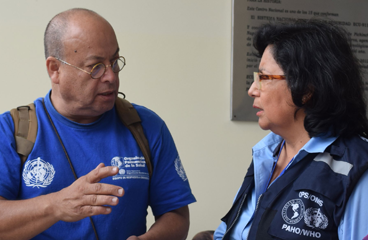
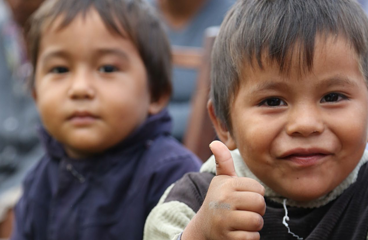
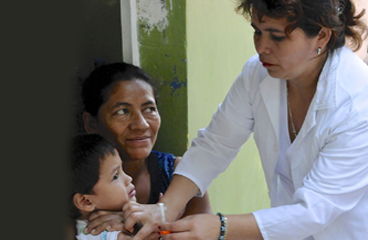
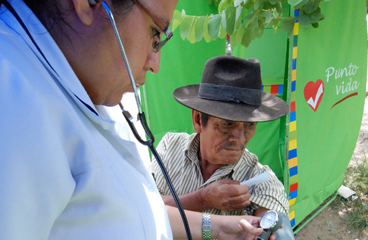


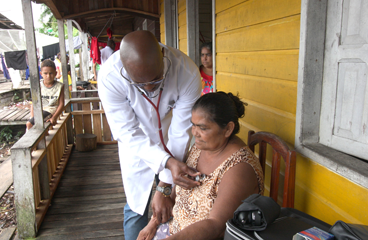

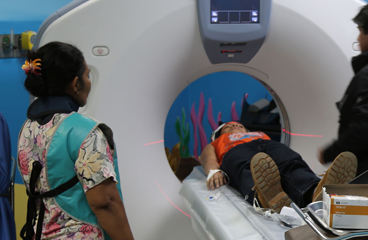
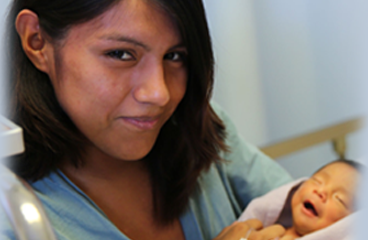
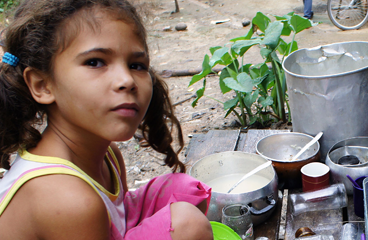
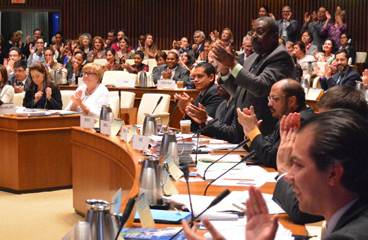

 The period under review, February 2013 to July 2017, covers
the majority of my current tenure as the Director of the Pan
American Sanitary Bureau—the PASB or Bureau—which is the
secretariat of the Pan American Health Organization (PAHO)
and the Regional Office for the Americas of the World Health
Organization (WHO). In 2013, I was honored when PAHO’s
Member States selected me as the 10th Director to lead this
venerable and august Organization. Almost five years later, I
still consider it an honor, a privilege, and a pleasure to be in the
service of the countries of the Region of the Americas in the
quest for health and wellness for all of their peoples.
The period under review, February 2013 to July 2017, covers
the majority of my current tenure as the Director of the Pan
American Sanitary Bureau—the PASB or Bureau—which is the
secretariat of the Pan American Health Organization (PAHO)
and the Regional Office for the Americas of the World Health
Organization (WHO). In 2013, I was honored when PAHO’s
Member States selected me as the 10th Director to lead this
venerable and august Organization. Almost five years later, I
still consider it an honor, a privilege, and a pleasure to be in the
service of the countries of the Region of the Americas in the
quest for health and wellness for all of their peoples.
 Over the 2013-2017 period, the Pan American Health
Organization, the Regional Office for the Americas of
the World Health Organization, continued to undertake
technical cooperation at the national, subregional, and
regional levels in support of national health development.
These efforts were led and coordinated by the Pan
American Sanitary Bureau (PASB), PAHO’s secretariat, and
involved key national and international stakeholders and
partners. PAHO’s technical cooperation during this period,
which began with Dr. Carissa Etienne assuming office
as Director of PAHO, has been guided primarily by the
PAHO Strategic Plan 2014-2019. The Strategic Plan was
developed with significant involvement of Member States
utilizing a bottom-up process that took into consideration
priorities determined at the country level through the
development of PAHO/WHO Country Cooperation
Strategies together with a priority-setting methodology.
It also aligned with the WHO General Programme of Work,
the Millennium Development Goals, the Health Agenda
for the Americas 2008-2017, and, in its forward-looking
formulation, the 2030 Sustainable Development Goals, to
ensure PAHO’s contribution to Member States’ fulfilment
of these major health-related international agreements
and frameworks.
Over the 2013-2017 period, the Pan American Health
Organization, the Regional Office for the Americas of
the World Health Organization, continued to undertake
technical cooperation at the national, subregional, and
regional levels in support of national health development.
These efforts were led and coordinated by the Pan
American Sanitary Bureau (PASB), PAHO’s secretariat, and
involved key national and international stakeholders and
partners. PAHO’s technical cooperation during this period,
which began with Dr. Carissa Etienne assuming office
as Director of PAHO, has been guided primarily by the
PAHO Strategic Plan 2014-2019. The Strategic Plan was
developed with significant involvement of Member States
utilizing a bottom-up process that took into consideration
priorities determined at the country level through the
development of PAHO/WHO Country Cooperation
Strategies together with a priority-setting methodology.
It also aligned with the WHO General Programme of Work,
the Millennium Development Goals, the Health Agenda
for the Americas 2008-2017, and, in its forward-looking
formulation, the 2030 Sustainable Development Goals, to
ensure PAHO’s contribution to Member States’ fulfilment
of these major health-related international agreements
and frameworks.
 Since the Pan American Health Organization was established
in December 1902, its focus has broadened from the
prevention and control of selected infectious diseases to
include numerous other challenges to the health and wellbeing
of the peoples of the Region of the Americas. It is vital
to determine and address the underlying factors and root
causes of threats to health and wellness by examining such
issues as natural and man-made disasters and emergencies;
emerging and reemerging communicable diseases;
noncommunicable diseases, including mental disorders; and
promotion of health throughout the life course.
Since the Pan American Health Organization was established
in December 1902, its focus has broadened from the
prevention and control of selected infectious diseases to
include numerous other challenges to the health and wellbeing
of the peoples of the Region of the Americas. It is vital
to determine and address the underlying factors and root
causes of threats to health and wellness by examining such
issues as natural and man-made disasters and emergencies;
emerging and reemerging communicable diseases;
noncommunicable diseases, including mental disorders; and
promotion of health throughout the life course. The countries of the Americas have made significant
progress in improving access to health systems and
services. However, inequities in wealth and other social
determinants of health
The countries of the Americas have made significant
progress in improving access to health systems and
services. However, inequities in wealth and other social
determinants of health PAHO continued its long history of technical cooperation
with countries in preventing, preparing for, and responding
to natural and man-made emergencies and disasters, and
worked with Member States to build core capacities for
implementation of the International Health Regulations
(2005) and the detection of, and response to, disease
outbreaks.
PAHO continued its long history of technical cooperation
with countries in preventing, preparing for, and responding
to natural and man-made emergencies and disasters, and
worked with Member States to build core capacities for
implementation of the International Health Regulations
(2005) and the detection of, and response to, disease
outbreaks. PAHO recognizes the central role of family and community
in promoting and protecting health as a social value and
a human right, and uses a life-course approach, from
preconception to old age, to address specific needs at
key stages of life. This approach is, by its very nature,
cross-cutting, and interventions related to the social
determinants of health and equity are critical for improving
health outcomes. Technical cooperation in this area seeks
to accelerate reductions in maternal, neonatal, and infant
mortality; promote the health, nutrition, and comprehensive
development of children from infancy to adolescence; and
address the health of older persons.
PAHO recognizes the central role of family and community
in promoting and protecting health as a social value and
a human right, and uses a life-course approach, from
preconception to old age, to address specific needs at
key stages of life. This approach is, by its very nature,
cross-cutting, and interventions related to the social
determinants of health and equity are critical for improving
health outcomes. Technical cooperation in this area seeks
to accelerate reductions in maternal, neonatal, and infant
mortality; promote the health, nutrition, and comprehensive
development of children from infancy to adolescence; and
address the health of older persons.
 PAHO’s Strategic Plan 2014-2019 specifies four crosscutting
themes—gender, equity, human rights, and
ethnicity—that are to be incorporated on a priority basis
across the spectrum of the Organization’s technical
cooperation. In 2014, the PAHO Director established an
interprogrammatic working group to facilitate this process,
with responsibilities that included ensuring that information
relevant to these themes is shared across departments
and units, and designing and implementing initiatives to
promote collaborative work in these areas. The working
group organized a training course for all PAHO staff on
the social determinants of health in the context of the
cross-cutting themes, and they also finalized guidelines for
mainstreaming the themes into the Organization’s work.
PAHO’s Strategic Plan 2014-2019 specifies four crosscutting
themes—gender, equity, human rights, and
ethnicity—that are to be incorporated on a priority basis
across the spectrum of the Organization’s technical
cooperation. In 2014, the PAHO Director established an
interprogrammatic working group to facilitate this process,
with responsibilities that included ensuring that information
relevant to these themes is shared across departments
and units, and designing and implementing initiatives to
promote collaborative work in these areas. The working
group organized a training course for all PAHO staff on
the social determinants of health in the context of the
cross-cutting themes, and they also finalized guidelines for
mainstreaming the themes into the Organization’s work.
 Noncommunicable diseases are the leading causes of
illness, disability, and death in the Americas. They account
for 79% of all deaths in the Region, and 35% of those deaths
are premature, that is, they occur in persons aged 30 to 69
years. PASB’s technical cooperation facilitated advocacy by
countries of the Caribbean, which had long recognized the
need to address these disorders. This work helped bring
NCDs to global attention and contribute significantly to
events that led to the 2011 UN High-level Meeting on the
Prevention and Control of Non-communicable Diseases and
the Meeting’s resulting Political Declaration.
Noncommunicable diseases are the leading causes of
illness, disability, and death in the Americas. They account
for 79% of all deaths in the Region, and 35% of those deaths
are premature, that is, they occur in persons aged 30 to 69
years. PASB’s technical cooperation facilitated advocacy by
countries of the Caribbean, which had long recognized the
need to address these disorders. This work helped bring
NCDs to global attention and contribute significantly to
events that led to the 2011 UN High-level Meeting on the
Prevention and Control of Non-communicable Diseases and
the Meeting’s resulting Political Declaration.
 Health in All Policies (HiAP) is seen as a new and innovative
expression of intersectoral action and as “the practical
arm” to implement the Rio Political Declaration on Social
Determinants of Health. As defined in the 2013 Helsinki
Statement on Health in All Policies, it is “an approach to
public policies across sectors that systematically takes
into account the health implications of decisions, seeks
synergies, and avoids harmful health impacts in order to
improve population health and health equity.” Although
the term refers to “in all policies,” this does not mean the
approach must be present in all initiatives. Rather, it refers
to the objective of ensuring that concern and responsibility
for health impacts and health equity are considered
systematically in all sectors.
Health in All Policies (HiAP) is seen as a new and innovative
expression of intersectoral action and as “the practical
arm” to implement the Rio Political Declaration on Social
Determinants of Health. As defined in the 2013 Helsinki
Statement on Health in All Policies, it is “an approach to
public policies across sectors that systematically takes
into account the health implications of decisions, seeks
synergies, and avoids harmful health impacts in order to
improve population health and health equity.” Although
the term refers to “in all policies,” this does not mean the
approach must be present in all initiatives. Rather, it refers
to the objective of ensuring that concern and responsibility
for health impacts and health equity are considered
systematically in all sectors.
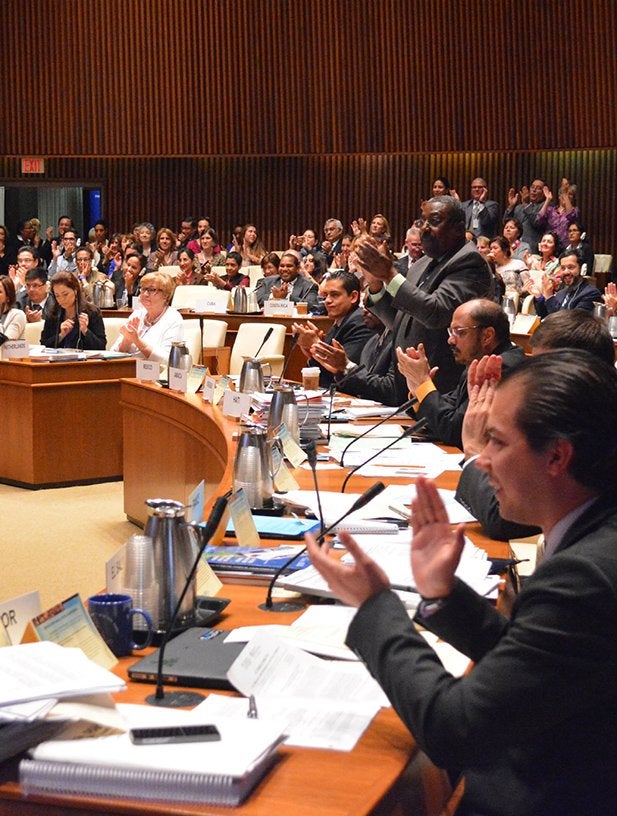 The Bureau continued to pursue policies and practices
to enhance its leadership, management, efficiency,
transparency, accountability, and ethics, and to promote
fair treatment in the workplace. The recommendations
of both internal and external evaluations and audits were
carefully analyzed, discussed with Member States, and
implemented as appropriate, resulting in initiatives and
developments at the institutional level that enhanced the
Bureau’s operations and impact.
The Bureau continued to pursue policies and practices
to enhance its leadership, management, efficiency,
transparency, accountability, and ethics, and to promote
fair treatment in the workplace. The recommendations
of both internal and external evaluations and audits were
carefully analyzed, discussed with Member States, and
implemented as appropriate, resulting in initiatives and
developments at the institutional level that enhanced the
Bureau’s operations and impact.
 PAHO’s technical cooperation contributed to continued capacity strengthening and many successes in countries,
and at the subregional and regional levels, during the period
of this report. PAHO’s Member States and PASB made use
of well tested modalities, such as the development and
use of policies and guidelines, but also devised creative
and innovative ideas, approaches, and tools, as in the use
of eHealth and the introduction of new technologies and
information-sharing platforms, to address priority public
health issues in the Region of the Americas. Member
States demonstrated their solidarity and collaborated
closely with PASB and each other as they sought to reduce
health inequities, make progress towards universal health,
and ensure the well-being of their populations. However,
there were many challenges during the period, and many of
them remain.
PAHO’s technical cooperation contributed to continued capacity strengthening and many successes in countries,
and at the subregional and regional levels, during the period
of this report. PAHO’s Member States and PASB made use
of well tested modalities, such as the development and
use of policies and guidelines, but also devised creative
and innovative ideas, approaches, and tools, as in the use
of eHealth and the introduction of new technologies and
information-sharing platforms, to address priority public
health issues in the Region of the Americas. Member
States demonstrated their solidarity and collaborated
closely with PASB and each other as they sought to reduce
health inequities, make progress towards universal health,
and ensure the well-being of their populations. However,
there were many challenges during the period, and many of
them remain.